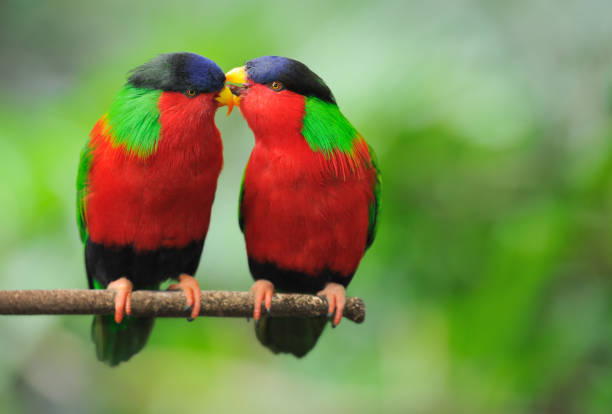Peculiar Parrots: Unraveling Unique Aspects of These Feathered Friends
Introduction: Parrots are renowned for their vibrant hues, intelligence, and uncanny ability to mimic human speech. However, there's more to these captivating creatures than meets the eye. This article delves into the fascinating world of parrots, exploring their intriguing history, recent developments, and the impact of their popularity on the pet market.

A Flight Through History: Origins of the Parrot Species
Parrots belong to the order Psittaciformes, which includes over 393 species found primarily in tropical and subtropical regions. Their history dates back millions of years, with the oldest known parrot fossil estimated to be 66 million years old. Remarkably, these early parrots already exhibited the same features we associate with their modern counterparts – a strong curved beak and a zygodactyl foot, which has two toes facing forward and two backwards. This design has allowed parrots to adapt to a variety of environments and food sources, contributing to their widespread presence today.
Current Parrot Trends: From Pirate Companions to Household Pets
Parrots have been part of human culture for centuries. Ancient Egyptians, Greeks, and Romans all appreciated these charming birds, often depicted in art and literature. Today, parrots are cherished pets, known for their sociability, playfulness, and, in some species, their ability to mimic human speech. Recent trends show a growing demand for parrots, especially among urban dwellers seeking interactive and entertaining companions. But with this increased popularity comes a higher price tag. Depending on the species, a parrot can cost anywhere from $200 to over $20,000, significantly impacting the pet market.
The Parrot Trade: An Unintended Consequence
The surge in demand for parrots as pets, coupled with habitat loss, has led to a significant decline in wild parrot populations. Many species are now listed as endangered or critically endangered. The Spix’s Macaw, famous for its starring role in the animated film ‘Rio,’ is now extinct in the wild, illustrating the severe impact of unchecked pet trade.
The Parrot Paradox: Intelligence Versus Longevity
One compelling aspect of parrots is their intelligence, comparable to that of a three-year-old human. They can solve complex puzzles, understand abstract concepts, and some species can even learn hundreds of words. However, this intelligence comes with a catch – parrots have long lifespans, some living up to 80 years. This longevity often results in parrots outliving their owners, creating a unique challenge in pet ownership and contributing to the issue of abandoned or surrendered parrots.
The Future of Parrots: Conservation and Responsible Pet Ownership
Efforts are underway to protect and conserve parrot populations worldwide. Organizations are implementing breeding programs, habitat restoration, and legislation to combat illegal trade. For prospective parrot owners, understanding the needs and lifespan of these creatures is crucial. By promoting responsible ownership and supporting conservation efforts, we can ensure these colorful, intelligent birds continue to charm future generations.
Final Thoughts:
Parrots are more than just attractive, talkative pets. They’re complex creatures with a rich history, distinctive characteristics, and unique challenges. By raising awareness about these aspects, we can foster a deeper appreciation for parrots and contribute to their survival and well-being.




